Introduction
In the pharmaceutical industry, where precision, sterility, and reliability are paramount, the safety of your equipment is crucial. Ensuring that pharmaceutical equipment remains safe and functional not only helps in maintaining compliance with stringent regulatory standards but also safeguards the quality of the products being manufactured.
Ensuring the safety of pharmaceutical equipment is paramount to maintaining product quality, protecting personnel, and meeting regulatory requirements. Here are some essential secrets to help you keep your pharmaceutical equipment safe.
1. Regular Maintenance and Calibration
Consistent Maintenance: Regular maintenance schedules are essential to prevent unexpected breakdowns. Establish a maintenance routine that includes inspections, cleaning, lubrication, and parts replacement as needed. This helps in identifying potential issues before they become significant problems.
Calibration: Regular calibration of equipment ensures that all instruments are providing accurate readings. This is particularly crucial for equipment that measures, mixes, or controls production processes. Calibration should be done according to the manufacturer’s guidelines and regulatory requirements.
2. Proper Training for Personnel
Comprehensive Training Programs: Ensure that all personnel who interact with the equipment are thoroughly trained. Training should cover operation, cleaning, troubleshooting, and emergency procedures. Well-trained staff are less likely to make errors that could compromise equipment safety.
Continuous Education: The pharmaceutical field is constantly evolving. Regular refresher courses and training on new equipment or updated procedures keep staff up-to-date with best practices and safety protocols.
3. Implementing Standard Operating Procedures (SOPs)
Develop SOPs: Create detailed Standard Operating Procedures for every piece of equipment. SOPs should outline step-by-step instructions for operation, cleaning, maintenance, and emergency shutdowns. These procedures ensure consistency and safety in equipment handling.
Regular Review and Updates: SOPs should be living documents. Regularly review and update them to reflect any changes in equipment, processes, or regulatory requirements. This ensures that the procedures remain relevant and effective.
4. Environmental Control
Clean Room Standards: Pharmaceutical equipment often operates in clean room environments. Maintaining stringent environmental controls, such as temperature, humidity, and air quality, is crucial. Ensure that clean rooms meet the required standards to prevent contamination and equipment degradation.
Monitoring Systems: Use environmental monitoring systems to continuously track the conditions within the clean rooms. Any deviation from the set parameters should trigger alarms and corrective actions to maintain optimal conditions.
5. Utilizing Advanced Technology
Predictive Maintenance Tools: Implement predictive maintenance technologies such as IoT sensors and AI algorithms. These tools can monitor equipment performance in real-time and predict potential failures before they occur, allowing for proactive maintenance.
Automation and Control Systems: Advanced automation systems can reduce human error and enhance precision in equipment operation. Automated control systems ensure that processes run within the set parameters, safeguarding both the equipment and the product quality.
6. Quality Assurance and Regular Audits
Quality Assurance Programs: Develop robust quality assurance programs that include regular equipment audits. These audits should assess the condition, performance, and compliance of the equipment. Identifying and addressing issues during audits can prevent major problems.
Third-Party Inspections: Consider periodic inspections by third-party experts. These independent evaluations provide an unbiased assessment of equipment safety and compliance, ensuring that your equipment meets the highest standards.
7. Proper Documentation
Comprehensive Records: Maintain detailed records of all maintenance, calibration, and repairs performed on each piece of equipment. This documentation is vital for traceability and compliance with regulatory standards.
Audit Trails: Ensure that all changes, updates, and inspections are logged in an audit trail. This trail provides transparency and accountability, which are essential in the highly regulated pharmaceutical industry.
8. Comprehensive Risk Assessment:
Conduct thorough risk assessments for each piece of equipment and associated processes. Identify potential hazards, such as mechanical failures, electrical malfunctions, and chemical exposures. Evaluate the severity of each hazard and implement appropriate controls to mitigate risks.
9. Adherence to Good Manufacturing Practices (GMP):
Follow GMP guidelines and regulations, which provide standards for the design, construction, and operation of pharmaceutical equipment. GMP ensures that equipment is fit for its intended purpose, maintained properly, and used safely throughout its lifecycle.
10. Use of Safety Features and Controls:
Equip pharmaceutical equipment with built-in safety features, such as emergency stop buttons, interlocks, guards, and alarms. Implement engineering controls to minimize exposure to hazards, such as containment systems for handling potent compounds.
11. Continuous Improvement and Risk Management:
Foster a culture of continuous improvement and proactive risk management within the organization. Encourage personnel to report safety concerns, near misses, and incidents promptly. Implement corrective and preventive actions to address root causes and prevent recurrence.
Conclusion
Keeping pharmaceutical equipment safe involves diverse approach that includes regular maintenance, proper training, stringent SOPs, environmental control, advanced technology, quality assurance, and thorough documentation.
By implementing these secrets, you can ensure that your equipment operates safely and efficiently, ultimately protecting the integrity of your pharmaceutical products and maintaining compliance with industry regulations.
Investing in equipment safety is investing in the success and reputation of your pharmaceutical operations.






